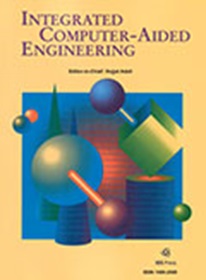An advanced multimodal driver-assistance prototype for emergency-vehicle detection
IF 5.3
2区 计算机科学
Q1 COMPUTER SCIENCE, ARTIFICIAL INTELLIGENCE
引用次数: 0
Abstract
In the automotive industry, intelligent monitoring systems for advanced human-vehicle interaction aimed at enhancing the safety of drivers and passengers represent a rapidly growing area of research. Safe driving behavior relies on the driver’s awareness of the road context, enabling them to make appropriate decisions and act consistently in anomalous circumstances. A potentially dangerous situation can arise when an emergency vehicle rapidly approaches with sirens blaring. In such cases, it is crucial for the driver to perform the correct maneuvers to prioritize the emergency vehicle. For this purpose, an Advanced Driver Assistance System (ADAS) can provide timely alerts to the driver about an approaching emergency vehicle. In this work, we present a driver-assistance prototype that leverages multimodal information from an integrated audio and video monitoring system. In the initial stage, sound analysis technologies based on computational audio processing are employed to recognize the proximity of an emergency vehicle based on the sound of its siren. When such an event occurs, an in-vehicle monitoring system is activated, analyzing the driver’s facial patterns using deep-learning-based algorithms to assess their awareness. This work illustrates the design of such a prototype, presenting the hardware technologies, the software architecture, and the deep-learning algorithms for audio and video data analysis that make the driver-assistance prototype operational in a commercial car. At this initial experimental stage, the algorithms for analyzing the audio and video data have yielded promising results. The area under the precision-recall curve for siren identification stands at 0.92, while the accuracy in evaluating driver gaze orientation reaches 0.97. In conclusion, engaging in research within this field has the potential to significantly improve road safety by increasing driver awareness and facilitating timely and well-informed reactions to crucial situations. This could substantially reduce risks and ultimately protect lives on the road.用于探测紧急车辆的先进多模式驾驶辅助原型机
在汽车行业,用于高级人车互动的智能监控系统是一个快速发展的研究领域,其目的是提高驾驶员和乘客的安全。安全驾驶行为依赖于驾驶员对道路环境的感知,使他们能够在异常情况下做出适当的决定并采取一致的行动。当一辆紧急车辆鸣着警笛快速驶来时,就可能出现潜在的危险情况。在这种情况下,驾驶员必须做出正确的操作,以确定紧急车辆的优先次序。为此,高级驾驶员辅助系统(ADAS)可以及时向驾驶员发出紧急车辆接近的警报。在这项工作中,我们展示了一个驾驶员辅助系统原型,它利用了集成音频和视频监控系统中的多模态信息。在初始阶段,我们采用了基于计算音频处理的声音分析技术,根据紧急车辆的警报声识别其接近程度。当此类事件发生时,车载监控系统就会启动,利用基于深度学习的算法分析驾驶员的面部模式,以评估他们的意识。本作品展示了这种原型的设计,介绍了用于音频和视频数据分析的硬件技术、软件架构和深度学习算法,从而使驾驶辅助原型在商用车中投入使用。在最初的实验阶段,用于分析音频和视频数据的算法取得了可喜的成果。警报器识别的精确度-记忆曲线下的面积为 0.92,而评估驾驶员注视方向的精确度达到了 0.97。总之,参与这一领域的研究有可能通过提高驾驶员的意识,促进他们在关键情况下做出及时和知情的反应,从而显著改善道路安全。这将大大降低风险,最终保护道路上的生命安全。
本文章由计算机程序翻译,如有差异,请以英文原文为准。
求助全文
约1分钟内获得全文
求助全文
来源期刊

Integrated Computer-Aided Engineering
工程技术-工程:综合
CiteScore
9.90
自引率
21.50%
发文量
21
审稿时长
>12 weeks
期刊介绍:
Integrated Computer-Aided Engineering (ICAE) was founded in 1993. "Based on the premise that interdisciplinary thinking and synergistic collaboration of disciplines can solve complex problems, open new frontiers, and lead to true innovations and breakthroughs, the cornerstone of industrial competitiveness and advancement of the society" as noted in the inaugural issue of the journal.
The focus of ICAE is the integration of leading edge and emerging computer and information technologies for innovative solution of engineering problems. The journal fosters interdisciplinary research and presents a unique forum for innovative computer-aided engineering. It also publishes novel industrial applications of CAE, thus helping to bring new computational paradigms from research labs and classrooms to reality. Areas covered by the journal include (but are not limited to) artificial intelligence, advanced signal processing, biologically inspired computing, cognitive modeling, concurrent engineering, database management, distributed computing, evolutionary computing, fuzzy logic, genetic algorithms, geometric modeling, intelligent and adaptive systems, internet-based technologies, knowledge discovery and engineering, machine learning, mechatronics, mobile computing, multimedia technologies, networking, neural network computing, object-oriented systems, optimization and search, parallel processing, robotics virtual reality, and visualization techniques.
 求助内容:
求助内容: 应助结果提醒方式:
应助结果提醒方式:


